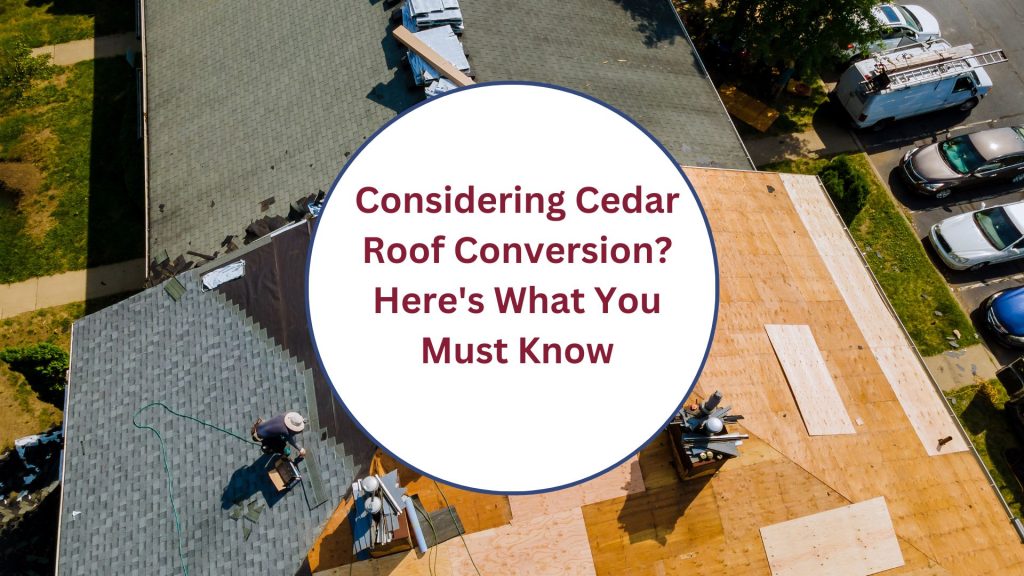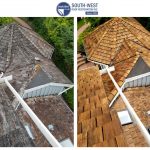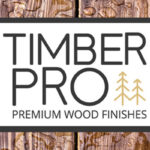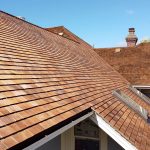Converting to a cedar roof is a significant decision that can transform the appearance and performance of your home. While cedar roofing offers numerous benefits, it’s essential to understand the conversion process and considerations before making the switch. In this blog post, we’ll provide valuable insights into cedar roof conversion, including its advantages, challenges, and what homeowners must know before embarking on this journey.
Advantages of Cedar Roofing:
- Timeless Beauty: Cedar roofing exudes natural beauty and rustic charm, enhancing the aesthetic appeal of any home.
- Durability: Cedar is a durable and long-lasting roofing material, with excellent resistance to rot, insects, and decay when properly maintained.
- Insulation: Cedar roofs provide natural insulation, helping to regulate indoor temperatures and reduce energy costs.
Challenges of Cedar Roofing:
- Maintenance: Cedar roofing requires regular maintenance, including cleaning, treatment, and occasional repairs, to preserve its appearance and performance.
- Cost: Cedar roofing typically comes with a higher upfront cost compared to some other materials, although its longevity and aesthetic appeal can offset this expense over time.
Cedar Roof Conversion Process:
- Inspection: The first step in the cedar roof conversion process is a thorough inspection of your existing roof. A professional roofing contractor like South-West Roof Restoration Inc. will assess the condition of the roof, identify any structural issues or underlying problems, and determine the feasibility of conversion.
- Removal: If your existing roof is made of a different material, it will need to be removed before installing the cedar roof. This process may involve stripping off old shingles, repairing any damaged areas, and preparing the roof deck for the new cedar roofing material.
- Installation: Once the roof has been prepared, the cedar roofing material is installed according to manufacturer specifications and industry best practices. This may involve laying down cedar shakes or shingles, applying protective coatings or treatments, and ensuring proper ventilation and drainage.
- Maintenance: After the cedar roof conversion is complete, regular maintenance is essential to ensure its longevity and performance. This may include cleaning, treating, and inspecting the roof periodically to identify and address any issues that arise.
What Homeowners Must Know:
- Cost: Cedar roof conversion can be a significant investment, so it’s essential to budget accordingly and consider the long-term value and benefits of cedar roofing.
- Maintenance Requirements: Cedar roofing requires regular maintenance to preserve its appearance and performance, so homeowners should be prepared to commit to ongoing care and upkeep.
- Environmental Impact: Cedar roofing is a natural, renewable material with minimal environmental impact, making it an eco-friendly choice for environmentally conscious homeowners.
In conclusion, cedar roof conversion is a transformative process that offers numerous benefits for homeowners seeking beauty, durability, and sustainability in their roofing material. By understanding the advantages, challenges, and considerations involved in cedar roof conversion, homeowners can make an informed decision that enhances the value and appeal of their home. Contact South-West Roof Restoration Inc. today to learn more about cedar roof conversion options and schedule a consultation with our team of experts.







